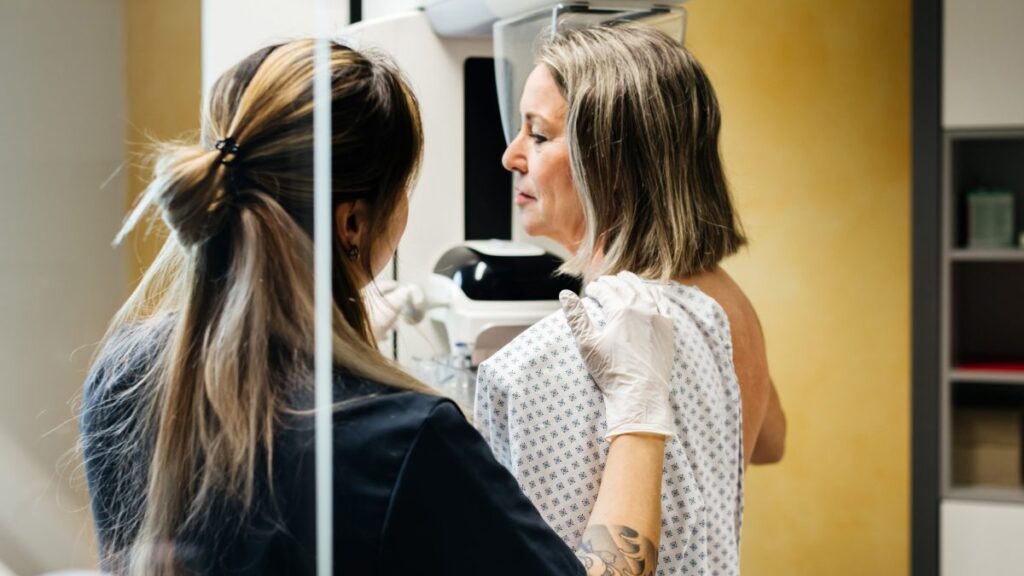
Breast cancer screenings could serve a dual purpose by identifying women at risk of heart disease, according to a groundbreaking study. Researchers have discovered that routine mammograms can detect women who may be prone to heart conditions, allowing for early intervention through lifestyle changes and medication to manage blood pressure and cholesterol levels.
Dr. Jennifer Barraclough, a cardiologist at The George Institute for Global Health in Sydney, led the study. She stated,
“Mammography has potential as a two-for-one risk assessment tool.”
Each year, approximately two million women in the UK undergo breast screenings, with the NHS inviting women aged 50 to 71 for checks every three years.
Breast Density: A Key Indicator
Breast X-rays, typically used for cancer screening, can also provide insights into heart health. Researchers found that the presence of plaques in heart arteries often correlates with plaques in other blood vessels, including those in the breasts. Additionally, higher fat content in breast tissue, visible on mammograms, is associated with increased fat around the heart, signaling potential heart disease.
To explore the feasibility of using breast screenings as a heart health check, Dr. Barraclough’s team analyzed health records from nearly 50,000 Australians who had undergone at least one mammogram. Over a nine-year follow-up period, 3,400 participants experienced a heart attack, stroke, or were diagnosed with arterial plaques.
AI: A New Frontier in Predictive Health
The study led to the development of an AI tool that assesses heart disease risk based on mammogram results and age. The AI’s accuracy in predicting heart disease was comparable to traditional screening methods, which typically involve a combination of risk factors such as weight, blood pressure, and family history.
Dr. Barraclough remarked that this suggests breast screenings could be instrumental in reducing heart disease risk among women. The research findings were published in the medical journal, Heart. In a related commentary, Professor Gemma Figtree, a cardiologist at the University of Sydney, emphasized the simplicity of this approach, noting that it
“would be a simple measure that does not require additional history or blood tests and could be integrated into a routine breast screening visit.”
Exploring Unconventional Screening Methods
Meanwhile, other innovative methods for heart risk screening are under investigation. Dr. Arunashis Sau, a cardiologist at Imperial College London, highlighted ongoing research into detecting plaques in blood vessels in the eye or neck. He explained,
“As you develop furring of the arteries, that will affect a lot of the arteries in the body, including the arteries of the heart. The fact that you can detect it from mammography is not that surprising.”
Dr. Sau noted the benefit of such approaches, stating,
“The benefit of an approach like this is that you can just do it in the background, so people that are already coming may have an added benefit, to identify people that are really high risk.”
He further suggested that this could serve as a wake-up call for patients to adopt healthier lifestyles through increased exercise, improved diet, reduced salt intake, and weight loss, with medication as a subsequent step.
Implications and Future Directions
The potential to use breast screenings as a dual diagnostic tool could revolutionize preventive healthcare for women. By integrating heart disease risk assessment into routine mammograms, healthcare providers may offer a more comprehensive screening process, ultimately reducing the incidence of heart disease in women.
As research continues, the integration of AI and unconventional screening methods may pave the way for more accurate and early detection of heart disease, potentially saving countless lives. The study’s findings underscore the importance of continued innovation in medical screening practices, aiming to provide holistic health assessments with minimal additional burden on patients.
As healthcare systems worldwide consider adopting these findings, the future of women’s health screening could see significant advancements, offering both breast cancer and heart disease prevention in a single visit.






